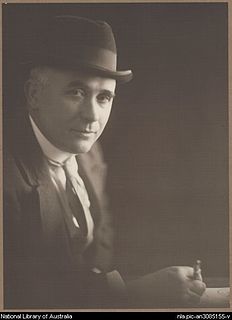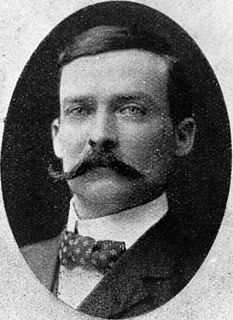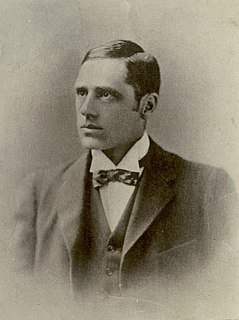| Wikisource has original text related to this article: |
The Poets of the Tomb is a poem by Australian writer and poet Henry Lawson. It was first published in The Bulletin magazine on 8 October 1892 in reply to fellow poet Andrew Barton "Banjo" Paterson's poem, In Answer to Various Bards.

Australia, officially the Commonwealth of Australia, is a sovereign country comprising the mainland of the Australian continent, the island of Tasmania and numerous smaller islands. It is the largest country in Oceania and the world's sixth-largest country by total area. The neighbouring countries are Papua New Guinea, Indonesia and East Timor to the north; the Solomon Islands and Vanuatu to the north-east; and New Zealand to the south-east. The population of 25 million is highly urbanised and heavily concentrated on the eastern seaboard. Australia's capital is Canberra, and its largest city is Sydney. The country's other major metropolitan areas are Melbourne, Brisbane, Perth and Adelaide.

Henry Archibald Hertzberg Lawson was an Australian writer and bush poet. Along with his contemporary Banjo Paterson, Lawson is among the best-known Australian poets and fiction writers of the colonial period and is often called Australia's "greatest short story writer".
Contents
In Up The Country, Lawson had criticised "The City Bushman" such as Banjo Paterson who tended to romanticise bush life. Paterson, in turn, accused Lawson of representing bush life as nothing but doom and gloom, [1] famously ending with the line "For the bush will never suit you, and you'll never suit the bush." [2]
The City Bushman is a poem by iconic Australian writer and poet Henry Lawson. It was first published in The Bulletin magazine on 6 August 1892, under the title In Answer to "Banjo", and Otherwise. It was the fourth work in the Bulletin Debate, a series of poems by both Lawson and Andrew Barton "Banjo" Paterson, and others, about the true nature of life in the Australian bush.
This exchange sparked what is known as the Bulletin Debate, mainly between Paterson and Lawson, but also including Edward Dyson and Francis Kenna.

The "Bulletin Debate" was a famous dispute in The Bulletin magazine from 1892–93 between two of Australia's most iconic writers and poets: Henry Lawson and Andrew Barton "Banjo" Paterson.

Edward George Dyson was an Australian journalist, poet, playwright and short story writer. He was the elder brother of illustrators Will Dyson and Ambrose Dyson.

Francis Kenna, was an Australian poet, journalist, and Labor Member of the Legislative Assembly in Queensland. He edited the "Brisbane Worker".
This poem ended the first phase of the debate because, as Paterson observed in 1939, the poets "...ran out of material."
